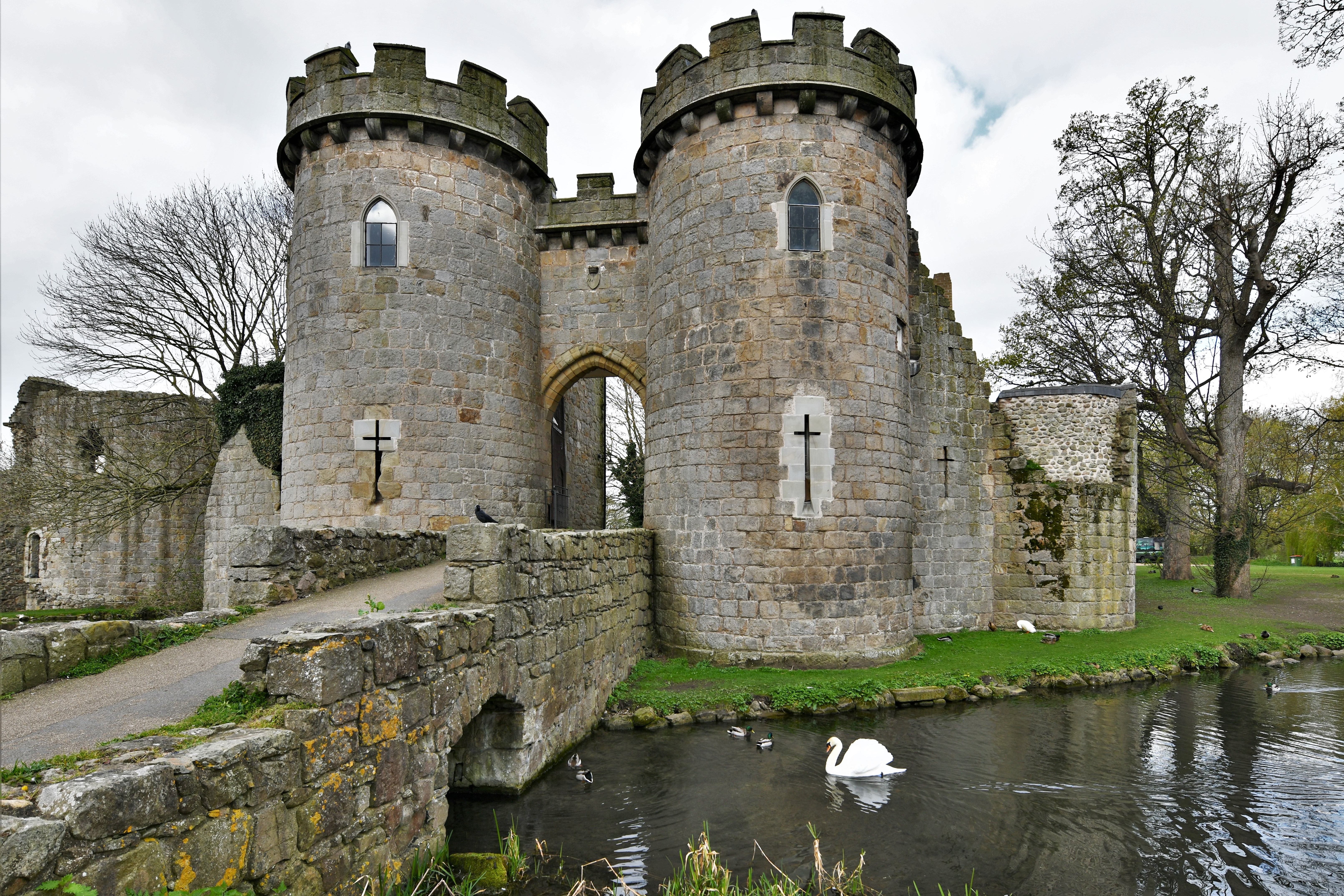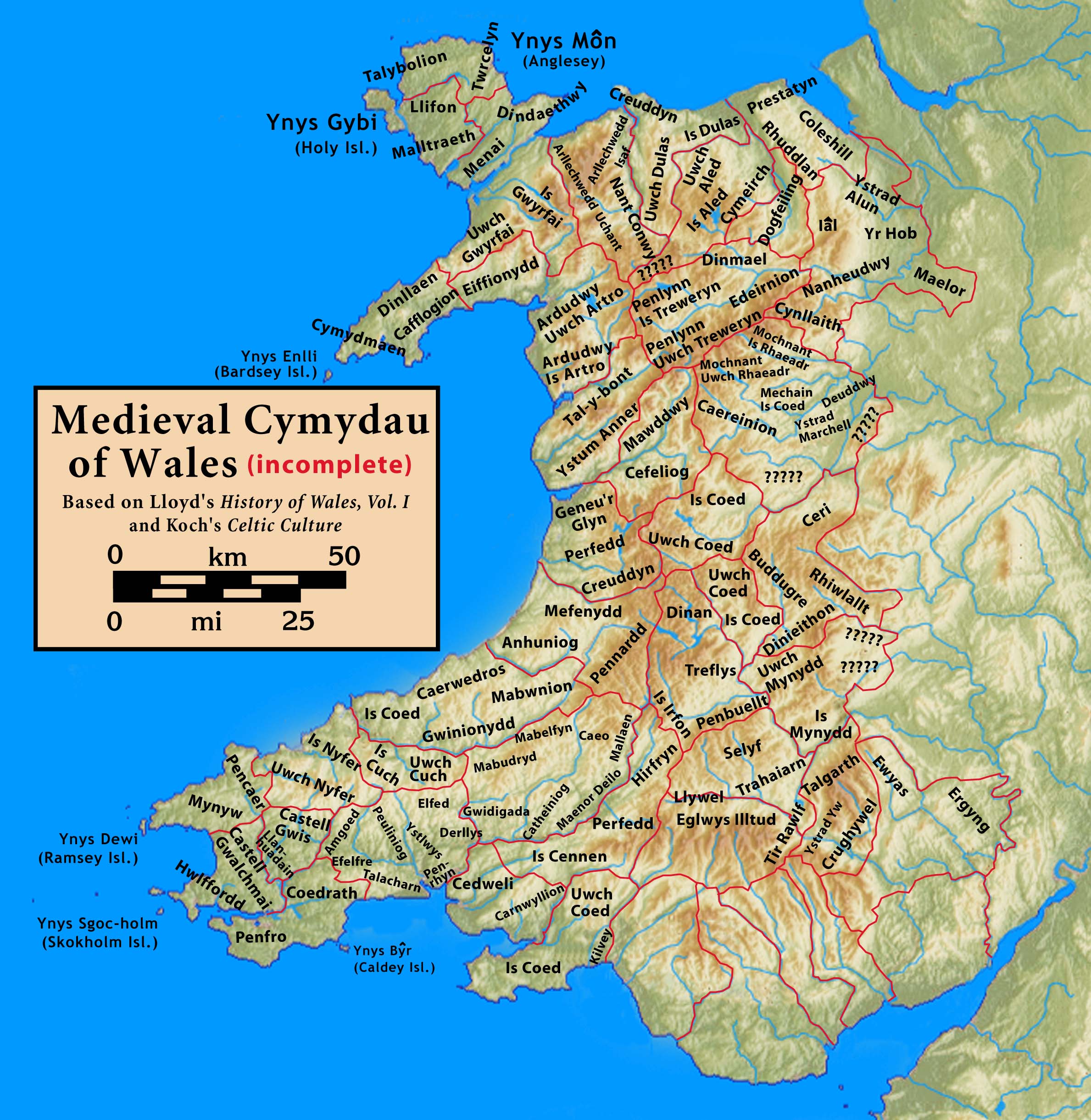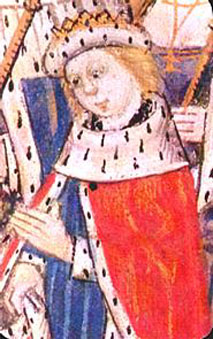|
Ial
Ial or Yale () was a commote of medieval Wales within the cantref of Maelor in the Kingdom of Powys. When the Kingdom was divided in 1160, Maelor became part of the Princely realm of Powys Fadog (Lower Powys or Madog's Powys), and belonged to the Royal House of Mathrafal. Yale eventually merged with another commote and became the Lordship of Bromfield and Yale, later a royal lordship under the Tudors and Stuarts. History The commote of Iâl, anglicised as Yale, was the stronghold of the Principality of Powys Fadog, and its capital was at Llanarmon-yn-Iâl, in Denbighshire, Wales, in a village situated at a shrine dedicated to the Roman Bishop, Germanus of Auxerre (). The nearby castle, named Tomen y Faerdre, built next to a Neolithic cave, was erected by the first Prince of Wales, Owain Gwynedd, after capturing the commote of Yale from the last Prince of Powys, Madog ap Maredudd. The castle was later rebuilt by King John of England, signatory of Magna Carta and brother ... [...More Info...] [...Related Items...] OR: [Wikipedia] [Google] [Baidu] |
Powys Fadog
Powys Fadog (English: ''Lower Powys'' or literally ''Madog's Powys'') was the northern portion of the former princely realm of Powys. The princes of Powys Fadog would build their royal seat at Castell Dinas Brân, and their religious center at Valle Crucis Abbey. Some of its lordships included those of Maelor, Mochnant, Glyndyfrdwy, Yale, and Bromfield and Yale. Following the division of Powys, their cousin branch, the princes of Powys Wenwynwyn, would build Powis Castle. The principality's first prince was Gruffydd Maelor I, and its last sovereign prince was Madog II ap Gruffydd, following the Conquest of Wales by king Edward Longshanks. History Powys Fadog split in two in 1160 following the death of Prince Madog ap Maredudd. He was a member of the Royal House of Mathrafal, founded by grandfather, King Bleddyn ap Cynfyn, who led a defence with the Anglo-Saxons against William the Conqueror.Pierce, T. J., (1959)MADOG ap MAREDUDD (died 1160), king of Powys Dictiona ... [...More Info...] [...Related Items...] OR: [Wikipedia] [Google] [Baidu] |
Llanarmon-yn-Iâl
Llanarmon-yn-Iâl is a village, and local government community, in Denbighshire, Wales, lying in limestone country in the valley of the River Alyn. The community is part of an electoral ward called Llanarmon-yn-Iâl/Llandegla. The population of this ward at the 2011 census was 2,456, the community population being 1062. Location The village sits on the B5431 road, near the junction with the B5430, six miles south of the market town of Mold, at approximate Ordnance Survey map grid reference . The boundaries of Llanarmon-yn-Iâl community include, as well as the main village, the villages of Eryrys and Graianrhyd, along with a number of small hamlets and large areas of farmland. The community lies mostly within the boundaries of the Clwydian Range and Dee Valley Area of Outstanding Natural Beauty. History The village, considered the capital of the commote of Iâl (Yale)—the "hill country"—grew up around a religious community dedicated to a Roman Bishop named St. ... [...More Info...] [...Related Items...] OR: [Wikipedia] [Google] [Baidu] |
House Of Mathrafal
The Royal House of Mathrafal, also known as the House of Powys, began as a cadet branch of the Royal House of Dinefwr, taking their name from Mathrafal Castle.The Houses of Cunedda and Rhodri Mawr Welsh Medieval Law: The Laws of Howell the Good (1909) by Hywel ap Cadell, translated by Arthur Wade Wade-Evans. They effectively replaced the List of rulers of Wales#House of Gwertherion, House of Gwertherion, who had been ruling the Kingdom of Powys since end of Roman rule in Britain, late Roman Britain, through the politically advantageous marriage of an ancestor, Merfyn Frych, Merfyn the Oppressor.Lloyd, John Edward (1911) [...More Info...] [...Related Items...] OR: [Wikipedia] [Google] [Baidu] |
Kingdom Of Powys
The Kingdom of Powys (; ) was a Welsh successor state, petty kingdom and principality that emerged during the Middle Ages following the end of Roman rule in Britain. It very roughly covered the northern two-thirds of the modern county of Powys and part of today's English West Midlands (see map). More precisely, and based on the Romano-British tribal lands of the Ordovices in the west and the Cornovii in the east, its boundaries originally extended from the Cambrian Mountains in the west to include the modern West Midlands region of England in the east. The fertile river valleys of the Severn and Tern are found there, and this region is referred to in later Welsh literature as "the Paradise of Powys" (an epithet retained in Welsh for the modern UK county). Name The name Powys is thought to derive from Latin ''pagus'' 'the countryside' and ''pagenses'' 'dwellers in the countryside', also the origins of French "pays" and English "peasant". During the Roman Empire, this regi ... [...More Info...] [...Related Items...] OR: [Wikipedia] [Google] [Baidu] |
Lordship Of Bromfield And Yale
The Lordship of Bromfield and Yale was formed in 1282Rogers 1992, p. viii. by the merger of the medieval commotes of Marford, Wrexham and Yale. It was part of the Welsh Marches and was within the cantref of Maelor in the former Kingdom of Powys. The marcher lordship was originally bestowed to the Earls of Surrey of the Warenne family, being seized from the inheritance of lord Madog Crypl, son of prince Gruffudd Fychan I.The baronage of England, or, An historical account of the lives and most memorable actions of our English nobility in the Saxons time to the Norman conquest University of Michigan, Dugdale, William, Sir, 1605-1686. These lordships historica ... [...More Info...] [...Related Items...] OR: [Wikipedia] [Google] [Baidu] |
Madog Ap Maredudd
Madog ap Maredudd (, ; died 1160) was the last prince of the entire Kingdom of Powys, Wales. He held for a time, the FitzAlan Lordship of Oswestry, family of the Earl of Arundel, Earls of Arundel, of Arundel Castle. His daughter married Lord Rhys, prince of Wales. Early life Madog was the son of King Maredudd ap Bleddyn and grandson of King Bleddyn ap Cynfyn. He followed his father on the throne of Powys in 1132. He is recorded as taking part in the Battle of Lincoln (1141), Battle of Lincoln in 1141 in support of Ranulf de Gernon, 4th Earl of Chester, along with Owain Gwynedd's brother Cadwaladr ap Gruffydd and a large army of Welshmen. In 1149 he is recorded giving the commote of Cyfeiliog to his nephews Owain Cyfeiliog and Meurig. The same year Madog was able to rebuild Oswestry Castle, a fortress of William Fitzalan (rebel), William Fitzalan. It would seem likely that he had gained both the fortresses of Oswestry and Whittington Castle, Whittington in 1146 of Fitzalan, the ... [...More Info...] [...Related Items...] OR: [Wikipedia] [Google] [Baidu] |
Maelor
The Maelor is an area of north-east Wales along the border with England. It is now entirely part of Wrexham County Borough. The name ''Maelor'' is an old Welsh word: it can be translated as "land of the prince", from ''mael'' ("prince") and ''llawr'' ("low ground", "region").Owen, Hywel Wynn (2017) ''Place-names of Flintshire'', Univ. of Wales Press, p.115 History The Maelor originated as a cantref of the Kingdom of Powys, focused on the monastic settlement of Bangor-on-Dee and containing the commotes of Maelor, Yale (Iâl), the Alyn Valley (Ystrad Alun) and Hope (Yr Hob). Most of the area fell under control of the Kingdom of Mercia during the eighth century, with Offa's Dyke delineating the new border. By the time of the 1066 Norman conquest of England, its eastern areas were recorded as held by Edwin, Earl of Mercia: they were later granted to the Norman magnate Hugh d'Avranches, Earl of Chester. The lands of the Maelor were only reincorporated in Powys during the reign ... [...More Info...] [...Related Items...] OR: [Wikipedia] [Google] [Baidu] |
Print (BM 1878,0511
Print or printing may also refer to: Publishing * Canvas print, the result of an image printed onto canvas which is often stretched, or gallery-wrapped, onto a frame and displayed *Offset printing, the inked image is transferred from a plate to a rubber blanket and then to the printing surface. *Old master print, a work of art produced by a printing process in the Western tradition * Photographic printing, the process producing a final image on paper * Edition (book)#Print run, Print run, all of the copies produced by a single set-up of the production equipment * Printing is the process for reproducing text and images using a master form or template * Printing press, a device for applying pressure to an inked surface resting upon a print medium * Printmaking, the process of making artwork by printing, normally on paper * Release print, a copy of a film that is provided to a movie theater * Textile printing, the process of applying color to fabric in patterns or designs * Waterle ... [...More Info...] [...Related Items...] OR: [Wikipedia] [Google] [Baidu] |
Prince Of Wales
Prince of Wales (, ; ) is a title traditionally given to the male heir apparent to the History of the English monarchy, English, and later, the British throne. The title originated with the Welsh rulers of Kingdom of Gwynedd, Gwynedd who, from the late 12th century, used it (albeit inconsistently) to assert their supremacy over the other Welsh rulers. However, to mark the finalisation of his conquest of Wales, in 1301, Edward I of England invested his son Edward of Caernarfon with the title, thereby beginning the tradition of giving the title to the heir apparent when he was the monarch's son or grandson. The title was later claimed by the leader of a Welsh Revolt, Welsh rebellion, Owain Glyndŵr, from 1400 until 1415. King Charles III created his son William, Prince of Wales, William Prince of Wales on 9 September 2022, the day after his accession to the throne, with formal letters patent issued on 13 February 2023. The title has become a point of controversy in Wales. Welsh ... [...More Info...] [...Related Items...] OR: [Wikipedia] [Google] [Baidu] |
Owain Gwynedd
Owain ap Gruffudd ( – 23 or 28 November 1170) was King of Gwynedd, North Wales, from 1137 until his death in 1170, succeeding his father Gruffudd ap Cynan. He was called Owain the Great () and the first to be styled "Prince of Wales" and the " Prince of the Welsh". He is considered to be the most successful of all the North Welsh princes prior to his grandson, Llywelyn ab Iorwerth (Llywelyn the Great). He became known as Owain Gwynedd (, "Owain of Gwynedd") to distinguish him from the contemporary king of Powys Wenwynwyn, Owain ap Gruffydd ap Maredudd, who became known as Owain Cyfeiliog. Early life Owain Gwynedd was a member of the House of Aberffraw, the senior branch of the dynasty of Rhodri Mawr (Rhodri the Great). His father, Gruffudd ap Cynan, was a strong and long-lived ruler who had made the principality of Gwynedd the most influential in Wales during the sixty-two years of his reign, using the island of Anglesey as his power base. His mother, Angharad ferch Ow ... [...More Info...] [...Related Items...] OR: [Wikipedia] [Google] [Baidu] |
Powys
Powys ( , ) is a Principal areas of Wales, county and Preserved counties of Wales, preserved county in Wales. It borders Gwynedd, Denbighshire, and Wrexham County Borough, Wrexham to the north; the English Ceremonial counties of England, ceremonial counties of Shropshire and Herefordshire to the east; Monmouthshire, Blaenau Gwent, Merthyr Tydfil County Borough, Merthyr Tydfil, Caerphilly County Borough, Caerphilly, Rhondda Cynon Taf, and Neath Port Talbot to the south; and Carmarthenshire and Ceredigion to the west. The largest settlement is Newtown, Powys, Newtown, and the administrative centre is Llandrindod Wells. Powys is the largest and most sparsely populated county in Wales, having an area of and a population of in . While largely rural, its towns include Welshpool in the north-east, Newtown in the north-centre, Llandrindod Wells in the south-centre, Brecon in the south, Ystradgynlais in the far south-west, and Machynlleth in the far west. The Welsh language can be spok ... [...More Info...] [...Related Items...] OR: [Wikipedia] [Google] [Baidu] |
Richard The Lionheart
Richard is a male given name. It originates, via Old French, from compound of the words descending from Proto-Germanic language">Proto-Germanic ''*rīk-'' 'ruler, leader, king' and ''*hardu-'' 'strong, brave, hardy', and it therefore means 'strong in rule'. Nicknames include " Richie", " Dick", " Dickon", " Dickie", " Rich", " Rick", "Rico (name), Rico", " Ricky", and more. Richard is a common English (the name was introduced into England by the Normans), German and French male name. It's also used in many more languages, particularly Germanic, such as Norwegian, Danish, Swedish, Icelandic, and Dutch, as well as other languages including Irish, Scottish, Welsh and Finnish. Richard is cognate with variants of the name in other European languages, such as the Swedish "Rickard", the Portuguese and Spanish "Ricardo" and the Italian "Riccardo" (see comprehensive variant list below). People named Richard Multiple people with the same name * Richard Andersen (other) ... [...More Info...] [...Related Items...] OR: [Wikipedia] [Google] [Baidu] |




